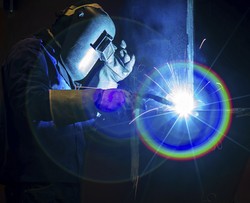Finite element modelling of weld solidification
The EU-funded project WELDMECS (Welding metallurgy and cracking in superalloys) was launched to develop hot cracking criteria for superalloys. These would be used to develop a finite element (FE) model to support aircraft manufacture. Cracks appear during solidification due to the different melting points of materials and impurities in a superalloy. WELDMECS envisioned a model that would allow thermomechanical simulations estimating the risk for crack formation. Extensive weldability testing, using newly built Varestraint equipment, supported the model's development. With the Varestraint equipment, researchers examined the microstructure of materials. During tests, they applied strain (bending force) parallel to the welding location of samples. The extent of cracking was observed as an indication of sensitivity to hot cracking. Gleeble testing, another common test protocol, was used as well to determine hot cracking criteria. Before Gleeble testing, samples underwent heat treatment in the affected zone. They were then tested at three different temperatures: below, at and above the ductility dip temperature. Researchers assumed that there is a range of temperatures above their solidification temperature, where materials are extremely sensitive to plastic deformation. The FE model takes this into consideration to convert available information into a parameter representing the risk of hot cracks forming. WELDMECS work resulted in FE models simulating two of the most widely used experimental tests to evaluate the effects of heating and forming. This will minimise the need for extensive testing and, subsequently, the time and cost of identifying proper conditions for manufacturing aircraft engine components.







